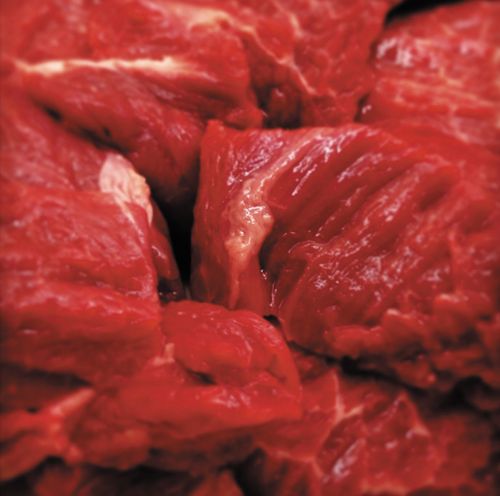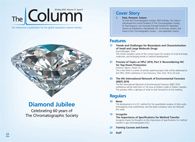Investigating Meat Authenticity
Researchers from Universidade Federal de Minas Gerais, Brazil, have used multiple analytical techniques including IEC and ATR‑FTIR spectroscopy to investigate bovine meat adulteration.
Photo Credit: Stefan Larsson / EyeEm/Getty Images

Researchers from Universidade Federal de Minas Gerais, Brazil, have used multiple analytical techniques including ion-exchange chromatography (IEC) and attenuated total reflectance Fourier-transform infrared (ATRâFTIR) spectroscopy to investigate bovine meat adulteration.1 An increasing concern across many nations, food authenticity represents a considerable challenge for analytical chemists.
Numerous scandals have been reported in recent years highlighting the impact of food fraud on consumers. Recent examples include the horsemeat scandal within Europe2 and the major scandal within Brazil with several slaughterhouses in the Belo Horizonte region found to be committing fraud through the addition of non-meat ingredients.3
Fraud with regards to meat can be categorized into four major areas: meat origin, meat substitution, meat processing, and nonâmeat ingredient addition.4
“Substitution of one species with another is the most reported type of meat fraud, such as in the recent horsemeat scandal [that] occurred in Europe in 2013,” explained Marcelo M. Sena from the Universidade Federal de Minas Gerais, Brazil, and lead author of the study. These type of substitutions have been widely reported with a number of analytical methods for detecting this fraud discussed and developed, however, the addition of non-meat ingredients has received much less attention. This current research aims to address that gap in the literature.
“We studied this type of meat fraud due to a real case investigated and elucidated by the Brazilian Federal Police in 2012. Adulterant substances were found in loco in the denounced slaughterhouses, including salts, such as sodium chloride, phosphate, tripolyphosphate and acid pyrophosphate, and maltodextrin. Specific equipment used for these frauds were also found there, such as injection and tenderizing machines,” said Sena.
Often the intention of adulterant substances is to increase the water holding capacity (WHC) of meat, thereby increasing the weight of the meat and its potential sale value. A standard method exists for detecting this based upon the water/protein ratio. However, it is much harder to detect water binding to the meat induced by the addition of salts and proteins. This water binding leaves the water/protein value ratio close to its natural value and to identify such fraud the detection of proteins and/or exogenous salts is required.
The Brazilian Federal Police provided 55 samples, with 12 controls taken directly from the bovine carcass. Physico-chemical parameters were determined for proteins, ash, sodium, chloride, and phosphate using the Kjeldahl method, gravimetry, and IEC. The research team also introduced the use of ATRâFTIR spectroscopy. A strategy of data fusion was implemented combining the outputs of multiple analytical techniques resulting in 91% of the adulterated samples being correctly identified. The analytical method used should preferably be “simple, rapid, of low cost, nonâdestructive, and involving no or a minimum of sample preâtreatment,” clarified Sena.
Further work is currently being carried out by Karen M. Nunes as part of a PhD thesis to obtain more robust models and an in-depth characterization of the fraudulent bovine meat. “The aim of this project is to prepare adulterated meat samples, simulating various types of frauds. These samples will be analyzed by analytical techniques that generated bidimensional data, such as image vibrational spectroscopy, and more complex chemometric methods, such as multivariate curve resolution and unfolded partial least squares,” explained Sena. - L.B.
References
- K.M. Nunes et al., Food Chemistry205, 14–22 (2016).
- Food Safety Authority of Ireland (FSAI) http://www.fsai.ie/news_centre/press_releases/horseDNA15012013.html (2013).
- Departamento de Polícia Federal (DPF) http://goo.gl/adPvdR (2012).
- N.Z. Ballin, Meat Science86, 577–587 (2010).

A Novel LC–QTOF-MS DIA Method for Pesticide Quantification and Screening in Agricultural Waters
May 8th 2025Scientists from the University of Santiago de Compostela developed a liquid chromatography quadrupole time-of-flight mass spectrometry (LC–QTOF-MS) operated in data-independent acquisition (DIA) mode for pesticide quantification in agriculturally impacted waters.
Investigating 3D-Printable Stationary Phases in Liquid Chromatography
May 7th 20253D printing technology has potential in chromatography, but a major challenge is developing materials with both high porosity and robust mechanical properties. Recently, scientists compared the separation performances of eight different 3D printable stationary phases.

.png&w=3840&q=75)

.png&w=3840&q=75)



.png&w=3840&q=75)



.png&w=3840&q=75)










